
GEM, as a key company in the first batch of Chinese leading green enterprises planning to list on the Swiss Stock Exchange, has attracted global capital markets and industry attention.
SHENZHEN, China, July 24, 2022 /PRNewswire/ -- GEM was founded in China twenty years ago. The founder of the company has a green dream, is dedicated to the world's green development and spares no effort to address climate change.
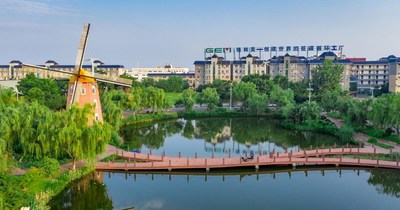
Humankind and nature are one living community, and only when they live in harmony can they have a better life.
In 2021, in the City of Glasgow, delegates representing nearly 200 countries seized what is considered to be the "last opportunity" to reverse the climate crisis by bravely agreeing the Glasgow Climate Pact. Ultimately, humanity has made a difficult but wise choice: limiting the global temperature rise to 1.5 degrees Celsius and pledging to cut global carbon dioxide emissions by nearly half by 2030. From the Kyoto Protocol to the Copenhagen Climate Change Conference to the Paris Climate Agreement, it took 25 years for humanity to finally move from a tiny step in a long history, to a tremendous leap in human civilization, by collectively embarking on the journey of carbon reduction!
In December 2001, a Chinese recycling technology researcher, Professor Xu Kaihua of Central South University, took the lead in proposing the concept of a green and low-carbon recycling industry with "limited resources, unlimited recycling" in China. Professor Xu launched the concept of "Green-Eco-Manufacture" in Shenzhen, China, thus naming his company "GEM". Professor Xu was hoping to resolve the double contradiction between the growing shortages of resources worldwide and the environmental pollution associated with traditional methods of procuring resources through exploiting urban mines and building a resource recycling model. Since that time, Professor Xu Kaihua has led his GEM team down the road to realizing a key green industry dream:"Exploiting urban mines, creating the world's recycling factory"
Central South University is a first-class university dedicated to non-ferrous metal mining, smelting and new energy development in China. It has educated and cultivated more than 30% of the engineering and technical top talented people in the field of non-ferrous metals and new energy in China.
In the past 20 years, GEM started with recycling nickel-cobalt resources and mobile phone batteries, moving on to include waste electronics and electrical equipment (E-waste), end-of-life vehicles, and power batteries (such as those used in Electric Vehicles (EVs). GEM then entered the world of re-manufacturing power batteries and power battery materials. Thus, GEM has thoroughly explored virtually all pathways for the comprehensive exploitation of urban mines. It has built an urban mining system centered on Chinese cities, and has successively made breakthroughs in key technologies such as used batteries, E-waste, end-of-life vehicles, lithium-nickel-cobalt-tungsten rare metal waste, power battery recycling, and the ternary "core" manufacturing of power battery materials. GEM has also developed key technologies and equipment systems for waste recycling, and constructed a new energy full life cycle value chain, which is the lithium-cobalt-nickel-tungsten resource recycling value chain, E-waste recycling value chain and new energy recycling models.
It has registered 2,455 patents in China and the world, won the China National Science and Technology Progress Award twice, and has more than 1,050 innovative talents (staff who have been recognized for their innovative abilities). It has been successively awarded by the Chinese government as a national circular economy pilot enterprise, a national circular economy education demonstration base, and a national "urban mines" demonstration base, a National Green Factory, a National Environmental Education Social Practice Base for Primary and Secondary School Students, a National Ecological Environment Science Popularization Base and other honorary green titles. GEM's achievements in exploiting urban mines have also been recognized by the world. It has won the "Global Circular Economy Award" in Davos in 2018. In 2021, the Hurun Research Institute ranked GEM as the number 8th Chinese company in terms of its alignment to implement the United Nations Sustainable Development Goals (SDGs). GEM has also participated in a key project of the Global Environment Facility (GEF) as a case study to reduce emissions of Persistent Organic Pollutants (POPs) from organic wastes. GEM has been written up in "Nature" magazine, and selected for Forbes Magazine's "2021 China's Most Innovative Enterprise List" TOP-50 list. GEM is a world-leading enterprise for enabling the circular economy, and has made contributions to the construction of a circular society and a green and low-carbon industrial model. GEM Is truly representative of the world's advanced enterprises that practice green and low-carbon development.
The development of GEM has complemented this historical opportunity for China's capital markets to promote green development.
In January 2010, GEM, which had already been established for 9 years, listed on the Shenzhen Stock Exchange with the first shares related to exploiting urban mines and contributing to China's circular economy. The raising of investment capital on the Exchange enabled the further expansion of GEM's urban mining efforts.
Investment in GEM on the Shenzhen Exchange arrived in a timely manner and enabled GEM to rapidly develop some 16 waste recycling facilities in 11 provinces and municipalities, including Hubei, Hunan, Guangdong, Jiangxi, Henan, Tianjin, Jiangsu, Zhejiang, Shanxi, Fujian, and Inner Mongolia (among others). With the opening of GEM' New Energy Materials Park, waste recycling range spans a radius of some 3,000 kilometers across China, and has established a waste treatment partnership with a catchment area comprising more than 500 million residents. The footprint of this circular development covers nearly 9 million square kilometers of China.
At the same time, GEM has also invested in facilities in South Africa, South Korea and Indonesia, thus exploiting urban mines on an international basis, therefore serving the world with green technology.
Thanks to 20 years of green efforts and recycling industry practices, GEM has realized the successful operation of the urban mines in China, and has proved in China that resource recycling can enter the mainstream of economic development and strategic emerging industry development.
1. Bravely going forward, building a power battery recycling system, meeting the challenges of the EU's "New Battery Act" and China's new energy development, and promoting new energy "from green to green"
GEM, as one of the first Chinese companies listed on the Swiss Stock Exchange (SIX), plans to build a power battery recycling facility in Europe to serve the requirements for new energy development for power batteries and nickel-cobalt-lithium resource recycling. At present, GEM has built power battery recycling facilities all over China, and in South Korea and Indonesia. GEM's ambition is to build a global power battery recycling system and become a global power battery recycling enterprise.
The "New EU Battery Regulation," implemented on January 1, 2022, requires that by 2030, the proportion of recycled materials of cobalt, nickel and lithium in battery production shall not be less than 12%, 4%, and 4%; by 2035, cobalt, nickel, and lithium in the use of recycled materials shall not be less than 20%, 12%, and 10%. These requirements in the "New EU Battery Regulation" presents new challenges to the global new energy vehicle industry.
In 2019, the Chinese government issued the "Industry Specifications for Comprehensive Utilization of Used Power Batteries for New Energy Vehicles (2019 Version)", which stipulates that the recovery rate of recycled lithium, nickel and cobalt shall not be less than 85%, 98.5% and 98.5%, respectively.
In 2016, when the world's new energy industry was still in its infancy, GEM proposed to build a new energy full life-cycle value chain of "recycling of used batteries - raw material remanufacturing - material remanufacturing - battery pack remanufacturing - cascade utilization". By promoting the world's new energy vehicle industry chain from "green manufacturing to manufacturing green," GEM believes that the development bottleneck of new energy is the recovery of the residual value of the power battery life-cycle. This life-cycle residual value includes two components. The first is that once the effective capacity (charge and discharge capacity) of a power battery is reduced (through many cycles of use) to 60%-70% of its original capacity, the battery can no longer meet the functional needs of consumers for new energy vehicles. Such batteries therefore need to be retired from use in EVs. This retired power battery cannot be recycled as waste, but can be downgraded from automotive applications to non-automotive applications such as engineering machinery, energy storage, and two-wheeled vehicles. Subsequent practices have proven that this concept of the power battery life-cycle value chain proposed by GEM in 2016 fully fits to conciliate the current practical contradiction of global new energy development. The residual energy value of batteries with 60-70% residual capacity is much greater than the value of being treated as waste. For example, 60-70% of the remaining capacity of a 60 KWh ternary battery pack can be charged and discharged for more than 500 times, and the residual value can be discounted to more than 50% of the original value, which is much higher than the value recycled as waste.
The second component is to implement GEM's specialty - resource recovery and ensure the harmless disposal of power batteries that have completely lost their service functions. This includes the complete recovery of valuable resources such as lithium, nickel, cobalt, manganese, copper, aluminum and phosphorus in power batteries, and undertaking the harmless and environment-friendly disposal of all non-recyclable components, so as to promote the sustainable development of new energy.
It has been proven that the development of new energy has resulted in a global shortage of nickel, cobalt and lithium resources, driving a sharp rise in prices of nickel, cobalt and lithium (among others). This situation places severe constraints on the healthy development of the new energy industry. Since 2021, the price of lithium carbonate, the core material for new energy batteries, has risen from 50,000 yuan/ton to more than 500,000 yuan/ton. The price of nickel on the London Stock Exchange once soared to over 100,000 US dollars/ton, representing the most single largest price increase for nickel resources in the history of the London Stock Exchange. "Demon nickel" and "lithium" have become the hottest words in the new energy resources field today. The sharp rise in the prices of nickel, cobalt and lithium resources has severely dampened the enthusiasm for the healthy development of the global new energy industry. People expect the price of nickel, cobalt and lithium to eventually return to normal. The recycling of power batteries is, conversely, in the calm eye of the storm. Only by solving the cascade utilization and full recycling of power batteries, can the chaotic rise in the price of nickel, cobalt and lithium be fundamentally suppressed, the sustainable and healthy development of new energy in the world be promoted, and the carbon reduction benefits and green efficiency of new energy be realized.
Since 2016, GEM has set up a research and development team and successively invested 1 billion yuan to achieve the non-destructive disassembly technology, rapid detection and sorting technology of power batteries, reassembly technology of power battery packs and modules, recovery technology of lithium-nickel-cobalt resources, and remanufacturing technology of ternary power materials. It has resulted in a new business model for recycling, and completely solved all the technical and commercial problems of recycling, disassembly, cascade utilization of power batteries, utilization and material remanufacturing lithium-nickel-cobalt resources. We have established a core technology system and standard system for the recycling of used batteries, applied for more than 330 core patents in the key technology links of the whole life cycle of power batteries worldwide, and participated in the formulation of more than 70 national / industrial standards in China. The "innovative mode of urban used battery recycling" project successfully won the "Paulson Sustainable Development Award - Green Innovation Category" award in 2020.
GEM has built five plants for recycling and dismantling of power batteries, three centers for cascade utilization and three plants for recovery of lithium-nickel-cobalt resources and remanufacturing of ternary power cathode materials in Shenzhen, the core city of the Pearl River Delta, Wuxi, the core city of the Yangtze River Delta (adjacent to Shanghai), Wuhan, the core city of central China, Tianjin, the core city of Beijing Tianjin Hebei (adjacent to Beijing), and Jingmen, the geographical center of China (located 100km from the world-famous Three Gorges Dam). With production capacity reaching 200,000 power battery packs per year, remanufactured power battery packs of 3GWh per year, the total recovery capacity of lithium-nickel-cobalt-manganese resources of 50,000 tons per year, and the production capacity of ternary precursor materials of 230,000 tons per year, GEM has become a world-leading enterprise with complete industrial chain of power battery recycling, cascade utilization and resource comprehensive utilization.
In addition, GEM has also established joint ventures for power battery recycling in South Korea and Indonesia.
GEM has signed agreements with more than 500 automobile and battery factories around the world to establish cooperative relationships for the targeted recycling of used batteries, and accelerated the implementation of the recycling market strategy of "50% signing and 30% recycling1".
GEM is also listed as a demonstration enterprise for power battery recycling by the Chinese government. GEM's three power battery recycling plants are listed on a white list of power battery recycling enterprises issued by the Ministry of Industry and Information Technology of China, accounting for 6.4% of the total number of 47 white list enterprises, ranking first in China.
2. Achieving fundamental technologies for the "core" material of ternary power batteries, becoming the primary manufacturing enterprise for ternary "core" materials in the world, and promoting the rapid growth of the company.
GEM has been committed to the research and manufacturing of nickel-cobalt new energy materials. Since 2013, GEM has entered the field of new energy material manufacturing from exploiting urban mines through the acquisition of Jiangsu Cobalt Nickel Metal Co., Ltd. Subsequently, GEM began to produce Co3O4 materials used in computer, communication and consumer electronic products (in China, known as "3C products"). The past five years have witnessed significant increases in sales volume of this material. At present, GEM's production comprises more than 16% of the world market - ranking second in the world.
Since 2015, GEM was not satisfied with producing only materials for 3C products, thereby setting its sights on the global power new energy market. This commenced with the manufacturing of the ternary precursors NCM and NCA for ternary power batteries with the recycling of nickel, cobalt, and manganese. This ternary precursor is known as the "CPU" of ternary power batteries or the "DNA" materials of ternary power batteries, as it largely determines the performance of ternary positive materials and ternary power batteries. The cathode for manufacturing ternary batteries is formed by a NCM/NCA ternary precursor and lithium carbonate or lithium hydroxide through sintering one or more times at high temperature.
Since 2016, GEM has commercialized ternary precursors on a global basis. For three years, from 2017 to 2019, GEM has occupied the first position in the global market, accounting for nearly 20% of the global market share. In 2020, affected by the COVID-19 pandemic, GEM ranked third in the global market. In 2021, the sales volume of GEM's ternary precursors rebounded to second place in the global market, accounting for 15% of the global market share.
GEM has also been committed to the development of high-end NCM/NCA ternary precursor technologies. For the industrialization of precursors with a high molar ratio of nickel (for example, 80% or 90%) and single crystal ternary precursor, GEM is a world leader. In 2021, GEM sold 55,000 tons of precursor comprising 80%-90% nickel. This sales volume accounts for more than 60% of total global sales volumes for ternary precursor, comprising over 20% of the world market share.
Over the past three years, in order to solve the problems limited mileage range and enhanced safety for new energy vehicles, GEM has started to make a technological breakthrough with the new-generation ternary precursor by researching its use in ternary power batteries with a range of 1000 km at a high level of safety. GEM launched a high-nickel core-shell NCM precursor and an ultra-high-nickel quaternary precursor which have been commercialized in 2022, becoming one of the few companies in the world producing high-nickel core-shell precursors and ultra-high-nickel quaternary precursors.
According to GEM's public release, GEM plans to sell 500,000 tons of ternary precursor to the world in 2026.
GEM announced that since March 2022, it has signed contracts with ECOPRO, a leading high-nickel ternary material manufacturer in South Korea, Xia Tungsten New Energy materials Co., Ltd and Rongbay Technology - all core ternary cathode material companies. From 2023 to 2026, GEM will supply 1.6 million tons of ternary precursor to these companies, which will be the largest ternary precursor order in the global new energy industry, locking in the market for the next five years. Among those contracts, GEM signed an agreement with ECOPRO to supply 800,000 tons of high-nickel low-cobalt precursor from 2023 to 2026, signed an agreement with Xia Tungsten New Energy to supply 455,000-540,000 tons of new-generation ternary precursor from 2023 to 2027, and signed an agreement with Rongbay Technology to supply 300,000 tons of ternary precursor from 2022 to 2026.
Through developing innovative recycling technologies, GEM has completed the brand reconstruction of waste recycling products through "waste recycling products - products to replace raw ore - products entering the mainstream market - world brand products". GEM has established green supply chain partnerships with Umicore, BASF Shanshan, ECOPRO, Samsung SDI, CATL, BYD and other world-famous companies, making waste recycling products the mainstream products for new energy materials in the world. From waste recycling to material reproducing, from green manufacturing to manufacturing green products, GEM profoundly interprets the meaning of "limited resources, unlimited circulation".
3. Developing "urban mines of nickel, cobalt and lithium" to make "the blood of new energy" circulate
Nickel, cobalt and lithium are known as "the blood of new energy" or "new energy metal", and are strategic metal resources for the production of new energy power batteries. GEM addresses the great treasure of "urban mines" and actively develops the recycling and reuse technologies for nickel, cobalt and lithium to create a world-leading nickel-cobalt-lithium resource recycling industrial chain. At present, GEM is the largest nickel-cobalt-lithium recycling enterprise in the world. GEM recycles more than 5,000 tons of cobalt every year, which is more than twice the original cobalt mining volume in China and accounts for 20% of the global cobalt resource recycling volume. GEM's annual recycling amount of nickel is more than 10,000 tons, accounting for 8% of the original nickel mining volume in China. A production line with an annual recycling capacity of 5,000 tons of lithium carbonate has been built by GEM. In 2026, GEM plans to annually recycle 500 million tons of nickel, 15,000 tons of cobalt, and 20,000 tons of lithium carbonate. Through large-scale recycling of nickel, cobalt and lithium across the world, GEM has been well-serving the strategic needs of global new energy for nickel, cobalt and lithium.
4. Being devoted to the recycling and reuse of E-waste and promoting the connection of the Chinese E-waste industry with Waste Electronics and Electrical Equipment and Restriction of Hazardous Substances (WEEE and RoHS) Directives
In the past 20 years, as a pioneer and leader in the Chinese E-waste treatment industry, GEM has been researching green disposal of E-waste since 2005. Having overcome the engineering challenges of recycling of E-waste, waste plastics, waste circuit boards, elaborate sorting and high-value utilization, GEM has developed and procured key technical equipment for full-component recycling, full-element utilization and in-depth recycling of E-waste. GEM took the lead in building the first demonstration production line for processing of E-waste in China, leading the Chinese E-waste treatment industry by fully meeting the requirements of the EU's WEEE and RoHS directives. Up to now, GEM has built 6 advanced large-scale processing centers for E-waste, 3 recycling centers for waste plastic and 1 disposal center for waste circuit boards, forming an industrial chain for the recycling E-waste: recycling and dismantling of E-waste - reproducing waste plastic - reproducing metal. The annual recycling and processing capacity of E-waste exceeds 10 million units, accounting for over 10% of the total E-waste in China. GEM has therefore become the leading enterprise of comprehensive utilization of E-waste in China.
5. Taking the high-speed rail of green development and embracing the opportunity of high growth and development
GEM has undertaken a dual-track green business model, driven by "new energy materials and urban mining". As part of the rapid development of global new energy materials and the general trend towards global carbon neutrality, this "double sword" has been developed to illustrate the competitive advantages of the world's leading enterprises.
The rapid development trend towards global new energy is unstoppable. The high-capacity ternary power battery plays the leading role, and ternary precursor materials are a significant factor in this emerging market, bringing high-speed growth opportunities for GEM.
According to the Sullivan Report2, global ternary precursor exports will grow at a compound annual growth rate of 23.5% from 2022 to 2030, and will reach 5.545 million tons in 2030.
In the future, ternary batteries will comprise high nickel batteries. The proportion of high nickel ternary batteries increased from 42% in 2021 to 79% in 2026. By 2026 the global high nickel ternary precursor market will reach 2.21 million tons, and 5.26 million tons by 2030.
GEM focuses on high nickel precursors, and the significant market presence in this area will facilitate GEM's industrial expansion plan with sales of 500,000 tons by 2026.
Compared with regions such as Europe that have developed earlier, after 40 years of reform and opening up and economic development in China, its transformation from largely industrial civilization to a consumption culture, with cities comprising hundreds of millions of urban consumers, China's cities are now huge resources for "urban mining". It is expected that by 2026, the urban mine business value of major cities in China, such as E-waste, used cars and batteries, will exceed a market size of 2.1 trillion RMB, with a compound annual growth rate of 89.71%, comprising a huge potential market. As the leading enterprise in urban mining, GEM will continue to maintain its 10% market share, with a projected value of 211.9 billion RMB. (Data Source: Frost & Sullivan3).
Twenty years of efforts for realizing a green dream, twenty years of world-leading innovative recycling, and twenty years of low-carbon contributions.
GEM, long a world leader in many areas of environmental protection, is yet commencing a new journey of green development. In the future, GEM will deeply pursue the strategy of "new energy materials and urban mining," plans to build 100 billion yuan in industrial projects, will consolidate its core position in the world new energy materials market, and plans to reduce carbon dioxide by 1 million tons by 2030, taking the lead as a carbon-neutral enterprise. GEM's ambition is to address global carbon neutrality and greenhouse gas emissions reduction strategies by exploiting urban mines and new energy materials, to create a world leader in green and low-carbon development, and to make a significant contribution to the development of the world's new energy industry and global greenhouse gas emissions reductions.
1The 500 companies GEM has signed agreements with represent 50% of the world's manufacturers. To-date, recycling is already ongoing as a result of these agreements with 150 of them - and the rest will soon follow.
2 See www.frost.com
3 See www.frost.com

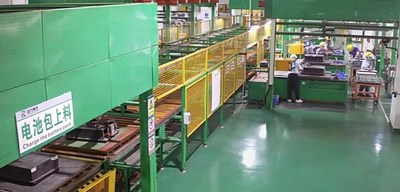

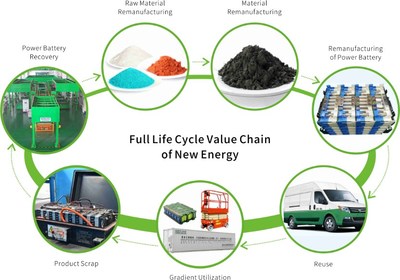
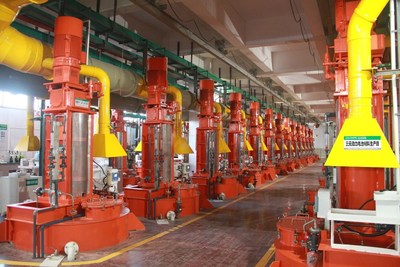
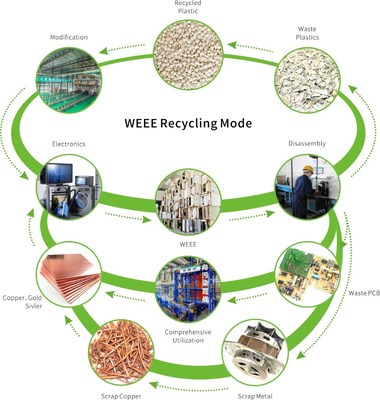
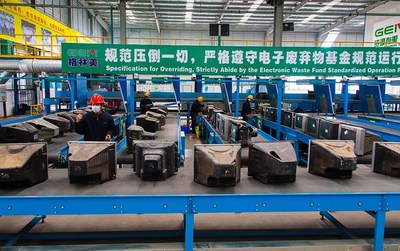


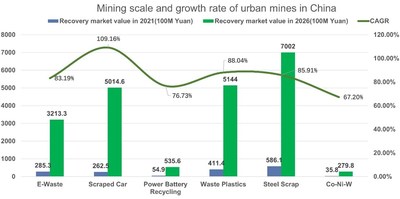
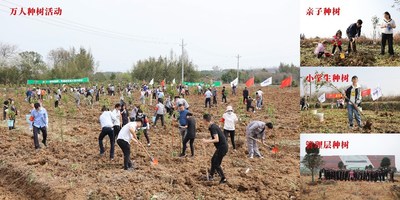
Photo - https://mma.prnewswire.com/media/1865162/GEM1.jpg
Photo - https://mma.prnewswire.com/media/1865163/GEM2.jpg
Photo - https://mma.prnewswire.com/media/1865164/GEM3.jpg
Photo - https://mma.prnewswire.com/media/1865165/GEM4.jpg
Photo - https://mma.prnewswire.com/media/1865166/GEM5.jpg
Photo - https://mma.prnewswire.com/media/1865167/GEM6.jpg
Photo - https://mma.prnewswire.com/media/1865168/GEM7.jpg
Photo - https://mma.prnewswire.com/media/1865169/GEM8.jpg
Photo - https://mma.prnewswire.com/media/1865170/GEM9.jpg
Photo - https://mma.prnewswire.com/media/1865171/GEM10.jpg
Photo - https://mma.prnewswire.com/media/1865172/GEM11.jpg
Photo - https://mma.prnewswire.com/media/1865173/GEM12.jpg


